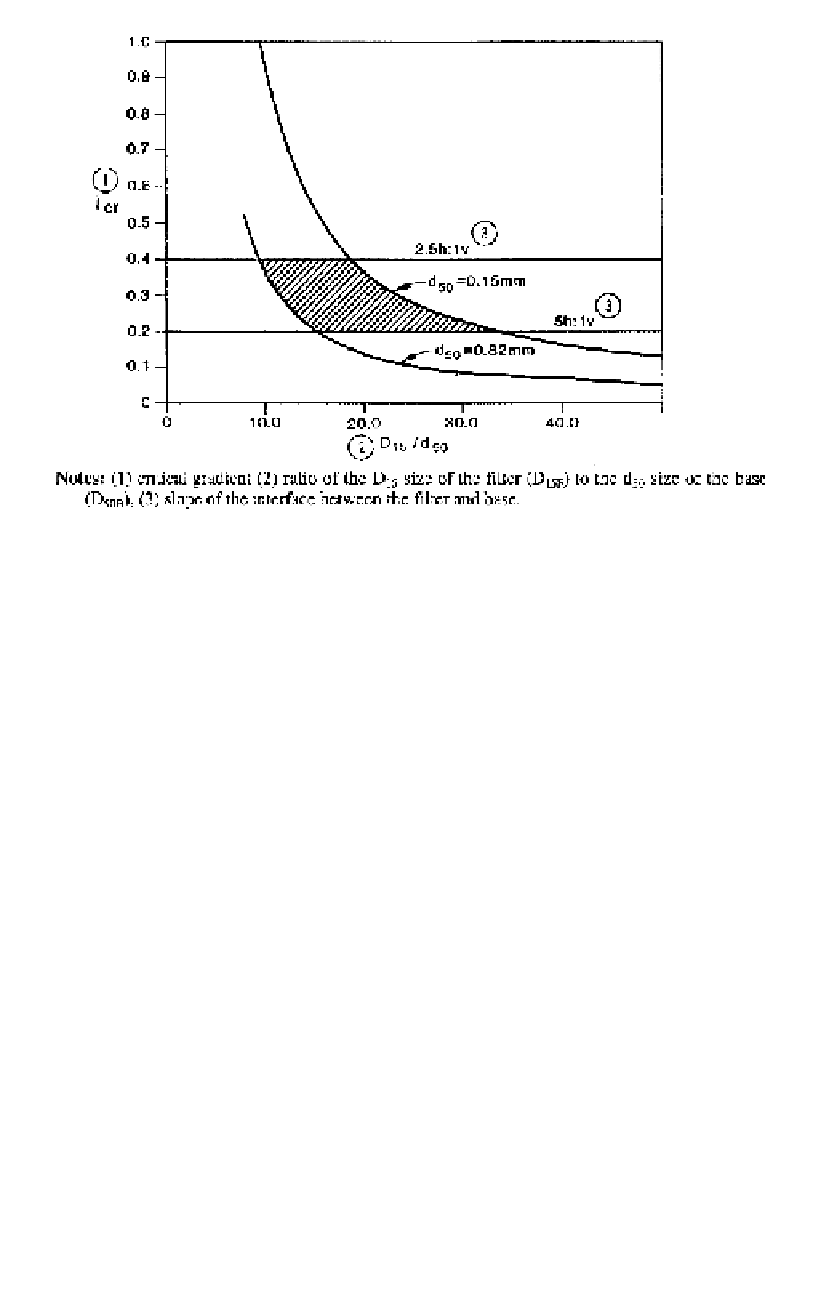Environmental Engineering Reference
In-Depth Information
Figure 9.19. Critical gradient with steady flow parallel to the interface (ICOLD, 1994, based on
Bakker, 1987).
for dispersive soils proposed by Foster (1999) and Foster and Fell (1999a). The base Soil
Groups are re-named 1, 2A, 3A and 4 to distinguish them from those used by Sherard and
Dunnigan (1985, 1989). The method is to determine filter gradation limits using the fol-
lowing steps:
Step 1
: Plot the gradation curve (grain-size distribution) of the base soil materials. Use
enough samples to define the range of grain sizes for the base soil or soils. Design the fil-
ter using the base soil that requires the smallest D
15F
size for filtering purposes. Base the
design for drainage purposes on the base soil that has a representative (say median) D
15B
size.
Step 2
: Proceed to Step 4 if the base soil contains no gravel (material larger than
4.75 mm) or if designing coarse filters, where the base soil is the fine filter.
Step 3
: Prepare adjusted gradation curves for base soils that have particles larger than the
4.75mmsieve.
- Obtain a correction factor by dividing 100 by the percent passing the 4.75 mm sieve;
- Multiply the percentage passing each sieve size of the base soil smaller than 4.75 mm
sieve by the correction factor determined above;
- Plot these adjusted percentages to obtain a new gradation curve;
- Use the adjusted curve to determine the percentage passing the 0.075 mm sieve in Step 4.
Step 4
: Place the base soil in a category determined by the percent passing the 0.075 mm
Step 5
: To satisfy filtration requirements, determine the maximum allowable D
15F
size
Step 6
: To ensure the filter is sufficiently permeable, determine the minimum allowable
D
15
size of the base soil gradation before regrading.
Step 7
: The width of the allowable filter design band must be kept relatively narrow to
prevent the use of possibly gap-graded filters, but wide enough to allow manufacture. Adjust

